摘 要
超声雾化技术由于产生的雾滴均匀性好、平均粒径小,分布集中、电源功耗低等优点在各个领域得到广泛应用。为了解决现有技术问题,进一步增强超声雾化喷涂时喷雾的抗干扰能力及喷雾头的实用性,在保证喷雾均匀性好、雾锥特性稳定的前提下尽可能实现喷涂宽度在较大范围内的变化,本文利用软件建模及有限元仿真分析相结合的方法,设计了气体辅助式超声雾化喷头,并在此基础上,设计可调的供气流体通道,实现了聚拢型喷雾与散射型喷雾在一个超声雾化喷头并存的设计方案。
本文的主要研究内容如下:
首先,通过理论公式推导计算得出喷涂宽度可调的气助式超声雾化喷头的主要机械振动结构超声换能器及变幅杆的具体尺寸参数,结合有限元分析技术,采用模态分析方法对所设计的带变幅杆的换能器进行虚拟仿真分析,将仿真结果与理论设计值进行比较。通过 ANSYS 软件对设计的结构进行模态分析,得到了与理论设计仅有 0.075%误差的纵向振动模态,满足超声雾化用换能器对性能的要求,用仿真验证理论设计的正确性,得出机械振动结构各部分最终尺寸参数。
其次,介绍了喷涂宽度可调的气助式超声雾化喷头的组成结构和基本工作原理。在机械振动结构确定的前提下,通过流体仿真的方法对超声雾化喷头的流道结构进行设计。小宽度喷涂时,采用单一变量的方法改变流体结构的各个参数,通过观察分析流体仿真结果中喷头内部气体的运动状况及在喷口处的射流情况来选择最优结构参数。大宽度喷涂时,采用涡流齿轮增大喷涂宽度的设计方案,通过流体仿真的方法,直接验证设计的可行性。确定整体结构参数,选择材料,进行样机制作。
最后,搭建超声雾化喷涂实验平台完成喷雾实验。对所设计的喷涂宽度可调的气助式超声雾化喷头进行一系列相关实验,研究影响喷涂效果的外部控制因素。
实验表明在进行小宽度喷涂时,发现在一定供气压力范围内,喷涂宽度呈现先增加后减小最后趋于平稳的趋势。在一定范围内改变喷涂高度,发现随着高度的增加,喷涂宽度呈现出先小幅度增加后减小最后趋于平稳的趋势。同样,在一定范围内改变供液流量,发现供液流量的变化对喷涂宽度的影响不大。在进行大宽度喷涂时,发现在一定供气压力范围内,随着供气压力的增大,喷涂宽度随之增大,最后趋于平稳。当在一定范围内改变喷涂高度时,随着高度的增加,喷涂宽度逐渐增加,最终趋于平稳。同样,在一定范围内改变供液流量,发现供液流量的变化对喷涂宽度的影响很小,喷涂宽度基本保持不变。在一个雾化喷头中进行的小宽度喷涂实验与大宽度喷涂实验充分证明了所设计的超声雾化喷头喷涂宽度在一定范围内的可调性。最后并对喷雾效果进行检验,结果表明超声雾化喷涂喷雾均匀,喷雾雾锥特性稳定,喷涂效果良好。
关键词:喷头,超声雾化,压电换能器,喷涂宽度可调,雾锥特性稳定
Abstract
Ultrasonic atomization technology has been widely used in various fields due to its good uniformity of droplets,small average particle size, concentrated distribution,and low power consumption.In order to solve the existing problems, and further enhance the anti-interference ability of the spray and the practicability of the spray head.Under the premise of ensuring the uniformity of spraying and the stability of the fog cone, the adjustability of the spraying width within a relatively large range can be achieved as much as possible.In this paper, a method of combining mathematical modeling and finite element simulation analysis was used to design a gas-assisted ultrasonic atomization device. Based on this, an adjustable gas supply fluid channel was designed to achieve a convergent spray and scattering type spray in an ultrasonic atomizing nozzles.
The main research content of this paper are as follows:
First of all, the specific size parameters of the main mechanical vibration structure ultrasonic transducer and the horn of the air-assisted ultrasonic atomizing nozzle with adjustable spray width are calculated through theoretical formula derivation.Combined with the finite element analysis technology, the modal analysis method was used to perform virtual simulation analysis on the transducer with a horn, and the simulation results were compared with the theoretical design values.The modal analysis of the designed structure was performed by ANSYS software. The longitudinal vibration modes with only 0.075% error from the theoretical design were obtained. The performance requirements of the ultrasonic atomization transducer were satisfied. The correctness of the theoretical design was verified by simulation. The final dimension parameters of each part of the mechanical vibration structure are obtained.
Secondly, the composition and basic working principle of the air-assisted ultrasonic atomizing nozzle are introduced.On the premise of determining the mechanical vibration structure, the flow channel of the ultrasonic atomizing nozzle is designed through a fluid simulation method.When spraying with a small width, a single variable method is used to change the various parameters of the fluid structure, and the optimal structural parameters are selected by observing and analyzing the motion of the gas inside the nozzle and the jet flow at the nozzle in the fluid simulation results.When spraying with a wide width, a turbine gear is used to increase the spray width and the feasibility of the design is directly verified by fluid simulation.
Determining the overall structural parameters, materials, and making a prototype.
Finally, an ultrasonic atomization spray test platform was set up to complete the spray experiment.A series of related experiments were conducted on the air-assisted ultrasonic atomizing nozzle designed to study the control factors that affect the spraying effect.The experimental results show that in the case of small width spraying, the spraying width first increases and then decreases within a certain supply pressure range, and finally becomes stable.The spraying height was changed within a certain range. As the height increased, the spraying width first increased slightly and then decreased and eventually became stable. In the same way, changing the liquid supply flow within a certain range, it was found that the change in the liquid supply flow has little effect on the spray width.When spraying with a large width, it was found that within a certain supply pressure range, the spray width increased with the increase of the air supply pressure, and eventually stabilized.When the spray height is changed within a certain range, the spray width gradually increases as the height increases, and eventually becomes stable.In the same way, changing the liquid supply flow within a certain range, it was found that the change of the flow rate of the liquid supply had little effect on the spray width, and the spray width remained basically unchanged.The small-width and wide-width spray test conducted in the atomizing nozzle fully prove that the ultrasonic spray nozzle spray width is adjustable within a certain range.
Finally, the spray effect was tested. The results showed that the spray was uniform, the spray fog cone characteristics were stable, and the spraying effect was good.
Key word:nozzle, ultrasonic atomization, piezoelectric transducer, adjustable spray width, fog cone characteristics
雾化的方式多种多样[1],传统的雾化方式有压力雾化、气体雾化、旋转雾化、气泡雾化、汽哨雾化等。压力雾化喷雾锥角小,喷雾锥角随压力及环境气体的密度发生变化;气体雾化喷雾锥角小,喷射气流速度低时雾化质量差;旋转雾化雾化量小且雾化后液滴颗粒较大;气泡雾化需附加供气装置;汽哨雾化液滴尺寸变化大,不易控制。与传统雾化方式相比,超声雾化作为一种新型的雾化方式,利用机械结构件表面的高频振动使固液接触面产生引起空化作用的激波,将连续的液滴撕裂成破碎的小液滴,进而形成雾滴集群[2],超声雾化具有很多优点,如雾化后的液滴颗粒均匀、粒径小、雾化一致性高、粒径分布集中、喷头结构相对简单、使用方便、雾化液体不易堵塞管道等[3],因为超声雾化具有的这些优点使其广泛应用。
超声雾化技术作为一项比较新的技术正在逐渐引起广泛的关注。超声雾化可以在液体传输速度很低时得到极佳的雾化效果,并且雾化后的液滴尺寸均匀,颗粒粒径细小,雾化质量高。现阶段,超声雾化主要包括两类[4]:流体动力式及压电换能式。按照超声波能量的来源将超声波雾化喷嘴同样分为两类:流体动力式超声雾化喷嘴及压电式超声雾化喷嘴。流体动力式超声雾化喷嘴主要是利用通过喷嘴速度极高的气体或液体激发共振腔室而产生的超声进行雾化喷涂,其中,共振腔的尺寸决定了其激发的超声波的频率,流体动力式超声雾化喷嘴频率都比较低。同时,液体的速率、共振腔的位置、喷嘴的大小及压力等因素都与雾化后的雾滴尺寸有关。
流体动力式雾化喷嘴虽然与压电式雾化喷嘴一样产生超声波,但是产生的雾滴粒径相对较大,相对而言,压电式超声雾化喷嘴将液体雾化后产生的液滴颗粒粒径较小且分布均匀,对于要求流量低、粒径要求较高的场合来说,压电式超声雾化器更加符合要求。
由于压电式超声雾化喷嘴具有雾化后产生的液滴颗粒细小且粒径均匀集中、原料消耗少、不易堵塞、高精度、高可控性、结构简单、操作方便等优点,广泛应用在工业、农业、医药、化工、能源等行业[5-12]。
压电式超声雾化喷嘴雾化效果极佳,是目前最具有发展潜力的一种雾化喷嘴。现阶段压电式超声雾化器主要有低频和高频[13]之分,其中工作频率处于 20kHz至 80kHz 之间的超声雾化器为低频超声雾化器,工作频率大于 1MHz 的超声雾化器为高频超声雾化器。对于高频超声雾化器,工作时对水质的要求高、连续工作的时间较短、可靠性较低、难以雾化粘度高的液体且极易改变液体的化学结构等,由于这些不可避免的缺点,极大的限制了高频超声雾化器的发展前景。因为低频超声雾化器具有这些优点:可靠性极高、不会破坏被雾化液体的化学结构、对水质要求不高,使低频超声波雾化在各个领域都得到了广泛的应用,因此,对低频超声雾化器进行研究显得极为有意义。同时压电式超声雾化器按换能器的不同又可分为磁致伸缩型及压电晶片型[14]。当采用磁致伸缩型换能器时,通常雾滴在其辐射面形成,在使用时,将变幅杆连接在换能器振子上,使得雾滴更容易产生,而当换能器是压电晶片时,产生的超声波达到兆赫级,使得大量的小液滴在液体表面处形成,实现液体的雾化。对于晶片型压电式超声雾化器,由于雾化时对液体水位有限制,极大限制了其应用范围,在本文中,主要介绍带变幅杆的磁致伸缩型压电式超声雾化喷嘴。
气助式超声雾化喷头设计:
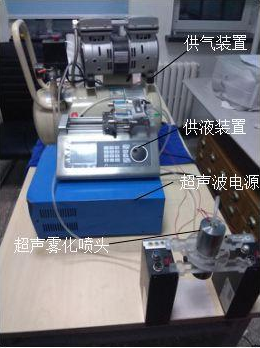
实验装置
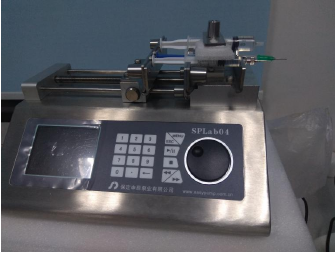
供液装置
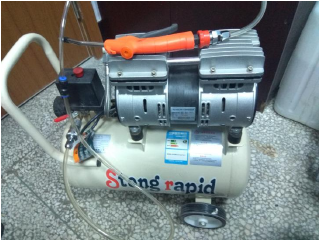
供气装置
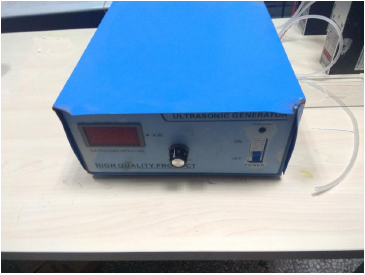
超声波电源
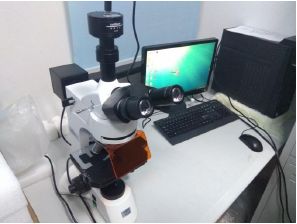
检测装置
目 录
摘 要
Abstract
第 1 章 绪论
1.1 引言
1.2 超声雾化技术概述
1.3 超声雾化喷嘴国内外发展现状
1.3.1 超声雾化喷嘴国外发展现状
1.3.2 超声雾化喷嘴国内发展现状
1.4 本文的研究意义及其主要内容
第 2 章 超声雾化喷涂基础理论
2.1 压电陶瓷材料简介
2.1.1 压电效应和逆压电效应
2.1.2 压电材料
2.1.3 压电方程
2.2 压电材料的重要性能参数
2.2.1 机电耦合系数
2.2.2 柔性常数
2.2.3 压电常数
2.2.4 电学品质因数及介质损耗因子
2.3 超声雾化理论基础
2.3.1 雾化锥角的概念
2.3.2 超声雾化的现有解释
2.4 载气雾锥输运流模型
2.4.1 雾化液滴的受力模型
2.4.2 雾化后液滴的碰撞模型
2.5 本章小结
第 3 章 超声雾化喷头机械振动结构设计
3.1 压电换能器简介
3.1.1 压电换能器的应用及分类
3.1.2 压电换能器的振动模态及选择
3.1.3 压电换能器驱动电压的波形选择
3.2 压电换能器的设计
3.2.1 压电换能器材料的选择
3.2.2 压电换能器尺寸设计
3.2.3 变幅杆尺寸的设计
3.3 压电换能器的模态分析
3.4 本章小结
第 4 章 喷涂宽度可调的气助式超声雾化喷头整体结构设计
4.1 喷涂宽度可调的气助式超声雾化喷头的工作原理
4.2 喷涂宽度可调的超声雾化喷头结构设计
4.2.1 超声雾化喷头气体流道的设计及仿真
4.2.2 超声雾化喷头外壳设计
4.3 超声雾化喷头的整体结构
4.4 本章小结
第 5 章 超声雾化喷涂实验及研究
5.1 实验装置
5.1.1 供液装置的选择
5.1.2 供气装置的选择
5.1.3 超声电源的选择
5.1.4 检测装置的选择
5.2 超声雾化喷头雾化流量
5.3 气助式超声雾化小宽度喷涂实验研究
5.3.1 供气压力对喷涂宽度的影响
5.3.2 喷涂高度对喷涂宽度的影响
5.3.3 供液流量对喷涂宽度的影响
5.4 气助式超声雾化大宽度喷涂实验研究
5.4.1 供气压力对喷涂宽度的影响
5.4.2 喷涂高度对喷涂宽度的影响
5.4.3 供液流量对喷涂宽度的影响
5.5 喷涂效果检测
5.6 本章小结
第 6 章 结论与展望
6.1 主要工作与结论
6.2 展望
参考文献
作者简介
致 谢
(如您需要查看本篇毕业设计全文,请您联系客服索取)